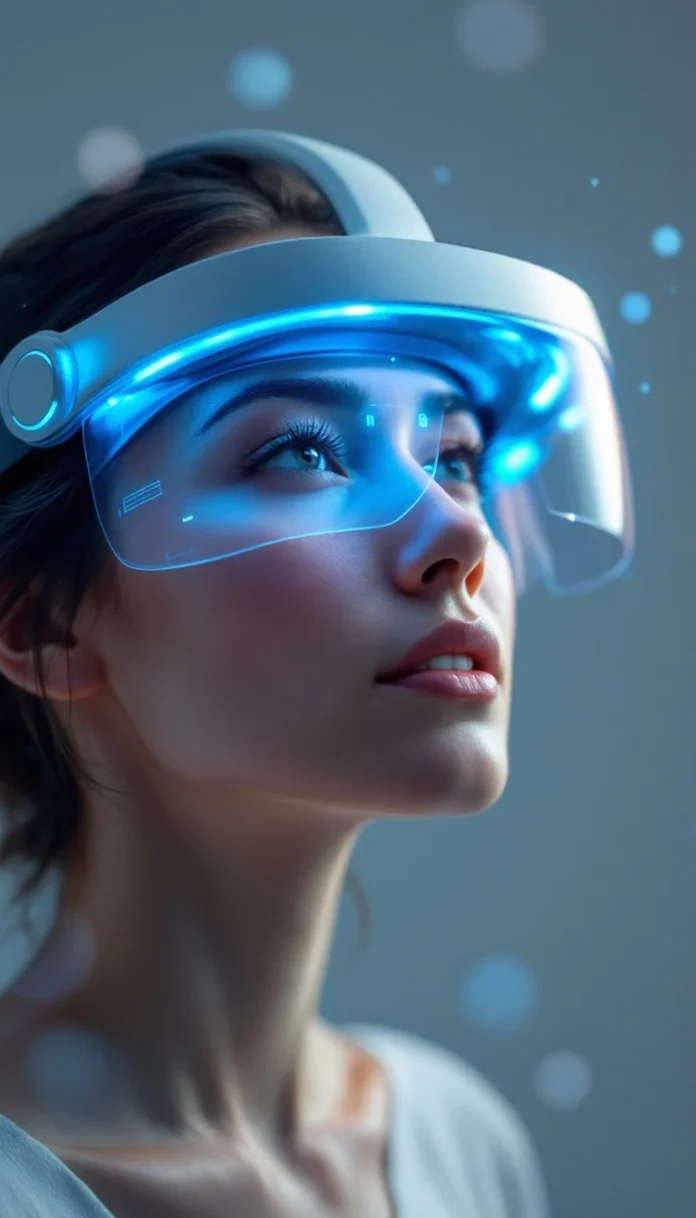Northwestern University engineers have unveiled a groundbreaking wearable device that replicates the nuanced sensations of human touch, promising to revolutionise how we interact with digital and physical environments.
A Breakthrough in Haptics
Traditional haptic feedback devices are limited to simple vibrations. However, our skin is equipped with thousands of sensors that detect pressure, stretching, and subtle vibrations, delivering an incredibly complex sense of touch. “Almost all haptic actuators really just poke at the skin,” said Dr. John A. Rogers, who led the design of the new device at Northwestern University. “We wanted to create a system that could mimic pushing, twisting, and sliding — essentially recreating the full spectrum of tactile sensations.”
How the Technology Works
The device, compact and lightweight, is designed to sit directly on the skin, where it applies controlled forces in any direction. It operates wirelessly, connecting via Bluetooth to virtual reality headsets, smartphones, and other devices. At its core, the device uses a tiny magnet and a set of wire coils arranged in a nesting configuration. When electricity passes through the coils, a magnetic field is generated. This field interacts with the magnet to produce forces that can push, pull, twist, or slide along the skin.
The device also incorporates an accelerometer, which measures its orientation and motion. This feature allows the system to adjust the tactile feedback based on the user’s movement and context, such as detecting whether the device is on a hand that is palm-up or palm-down. “By dynamically adjusting the direction and intensity of the force, we can create an experience that truly mirrors the sensation of touch,” explained Dr. Rogers.
Potential Applications
The potential uses for this technology span a broad range of fields. In virtual reality, for instance, the device can enhance immersion by simulating the textures of objects or the sensation of wind and water. For individuals with visual impairments, it could serve as a navigational aid by translating spatial information into tactile signals.
Retail and online shopping are also set to benefit. Imagine being able to “feel” the texture of a fabric or the smoothness of a piece of jewelry before buying it online. Additionally, the technology could enable people with hearing impairments to “feel” music through nuanced vibrational patterns that replicate different instruments and rhythms.
Healthcare is another promising sector. The device could be used in remote medical consultations to provide tactile feedback or assist in rehabilitation by giving patients controlled sensory inputs during therapy.
Bridging the Digital and Physical Worlds
By integrating advanced haptic feedback with everyday digital devices, this wearable device offers a transformative way to bridge the gap between the virtual and the physical. As digital interactions become increasingly prevalent, the ability to simulate a realistic sense of touch will enhance both consumer experiences and professional applications.
READ MORE: Making Waves: Saving Time, Space and Energy with Ultrasonics in Winemaking
Dr. Rogers and his team envision future iterations where arrays of these devices work in unison, potentially integrated into clothing or existing wearable electronics. “Our work is just the first step,” he said. “As we continue to refine the technology, we hope to unlock even more sophisticated interactions that will change how we perceive digital environments.”
Industry Impact and Future Developments
The research builds on years of work in bioelectronics and advanced materials, marking a significant leap forward in the field of haptics. While current haptic devices often fall short of replicating the full complexity of human touch, the new actuator’s ability to deliver multi-directional force promises a host of new applications and improved user experiences.
Northwestern University’s breakthrough could inspire further developments across industries, from gaming and entertainment to healthcare and assistive technologies. Researchers are already working on refining the actuator design and exploring synergies with other emerging technologies, such as AI-driven gesture recognition and smart fabrics.
Industry experts predict that this technology will soon become a key component in the next generation of wearable devices, offering users a more natural and engaging way to interact with technology. As the team prepares to publish their findings in the journal Science on March 28, the scientific community is eagerly anticipating the potential implications for both consumer products and professional tools.
Conclusion
The innovative wearable device developed by Northwestern University represents a major milestone in haptic feedback technology. By replicating the full range of human touch sensations, it not only paves the way for more immersive digital experiences but also holds promise for improving accessibility and healthcare applications. As this technology advances, it is set to change the way we interact with the world, blending the digital and physical realms in unprecedented ways.
